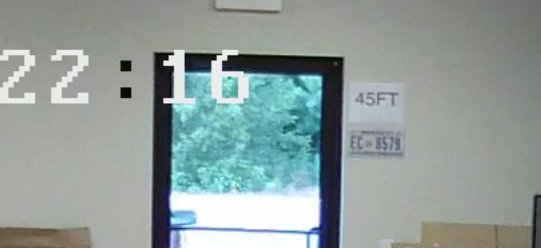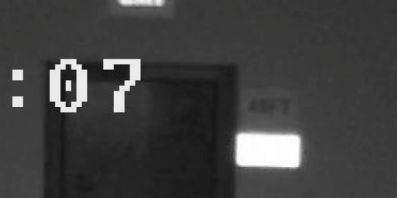Infrared and License Plates
License plate recognition even in broad daylight can be challenging - There are various factors that are involved in such as speed of vehicle, angle of the car, frames per second on the camera, etc.
During nighttime this challenge is increased exponentially. Beyond the standard factors, you have to deal with IR and the reflectiveness of most license plates.
The next time you’re at a parking lot you can take a look at the exit gate - there is likely a camera specifically dedicated to getting a license plate tag as the success rate is significantly higher than a multi-use camera in most situations.
For example - below is an example of a license plate from a fixed lens Wasp Pro 3.0 camera.

As you can tell - the license plate is fully legible during the day - this is with a front facing license plate at over 45FT away.

During night time the camera’s sensor is working much harder to deal with the lack of light. So details naturally become fuzzier and a bit more noisy.
The biggest issue however is the reflection of the license plate with the infrared.
Depending on the angle the light hits the license plate the license plate will reflect significantly.
The amount of reflection will greatly depend on the angle of light.
Potential Solutions
Turning Areal Lighting and Infrared Off -
Think of IR as a flash light it’s a high powered beam of light and any light (especially infrared lighting) will reflect against reflective objects.
The license plate recognition success rate will go up exponentially with IR off. With IR off you no longer have to deal with reflections.
This will require sufficient lighting around the area license plate recognition is required.
Stop Gate -
If license plate recognition is absolutely critical to the facility - having a stop gate or a significant speed bump to stop/slow down cars is another way of increasing the success rate.
Smart IR -
If areal lighting is not a possibility - Smart IR may have a minor affect. Smart IR will tone down the IR if it detects reflections. However in some cases the reflectiveness of license plates is too much even on low powered IR and Smart IR isn’t all that useful.
Conclusion
License plate recognition tests a camera’s limit better than anything. We recommend at least 1080p cameras for consistent levels of recognition. For long ranges you’ll need both high resolution and high levels of zoom with areal lighting.
For more information please contact SCW.
